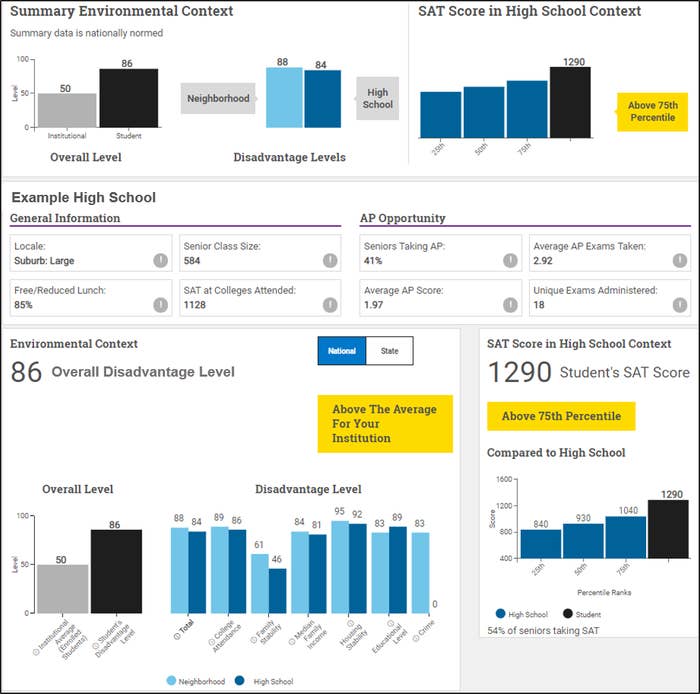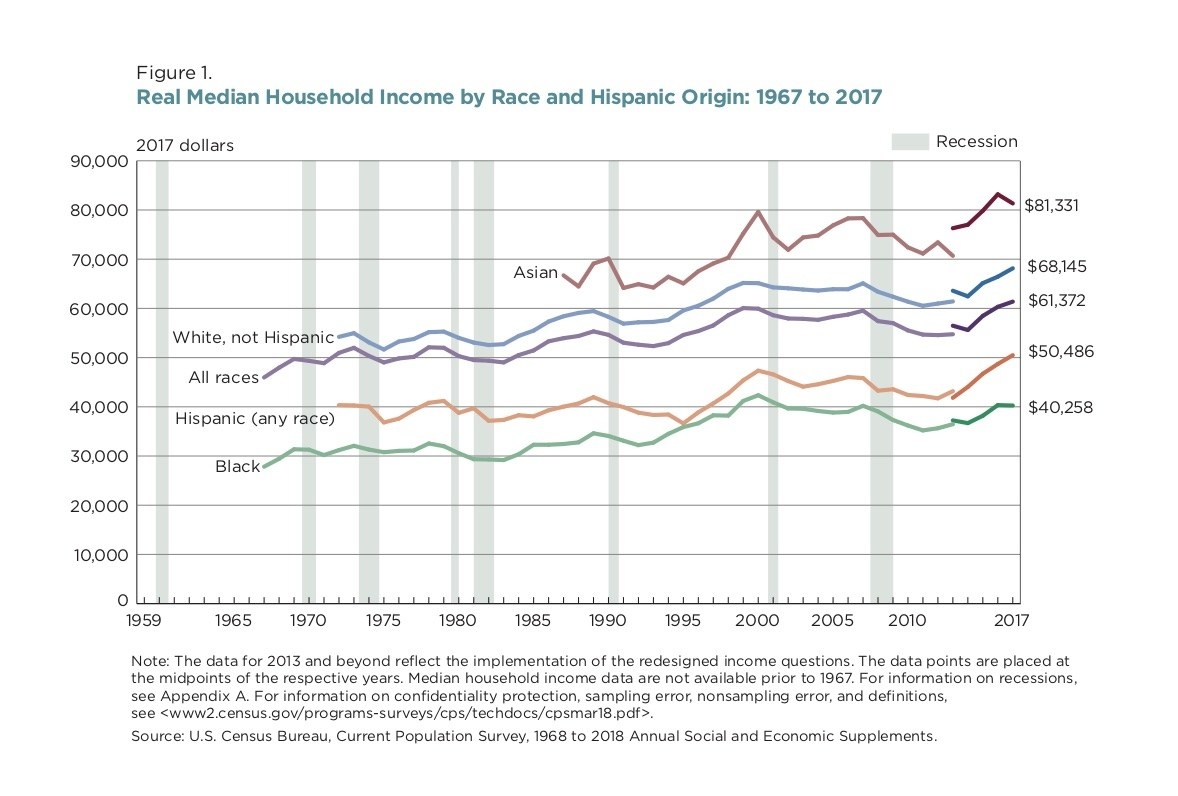
The College Board announced Thursday it will introduce a tool that allows admissions officers to see student SAT scores in the context of socioeconomic backgrounds.
This tool, which the College Board is calling the "Environmental Context Dashboard," or ECD, incorporates data from its testing record along with numbers from the the National Center for Education Statistics and the US Census — but does not include information on students' race or ethnic backgrounds.
To get the score, the College Board looks at two categories — neighborhood environment statistics and high school environment statistics. Neighborhood statistics include average family income, housing values, crime and poverty rates, familial structure, average education level, and more.
Data from the student's high school includes the average student SAT score of students who graduate and attend college, the number of AP classes offered and AP scores, and the percentage of students eligible for free and reduced-price lunch, among other things.
"There is talent and potential waiting to be discovered in every community — the children of poor rural families, kids navigating the challenges of life in the inner city, and military dependents who face the daily difficulties of low income and frequent deployments as part of their family’s service to our country," College Board CEO David Coleman said in a statement provided to BuzzFeed News Thursday. "No single test score should ever be examined without paying attention to this critical context."
Coleman said that the program has been piloted at 50 higher education institutions, and the College Board plans to make it widely available in 2020. Students won't be able to see their "adversity score," but college admissions officers will.
A student's ECD score, or "overall disadvantage level," will fall on a scale of 1 to 100, with 50 being the national and/or state average of high school students. Admissions officers will be able to see both averages.
Any number above 50 signifies "a more 'adverse' environment," per a College Board explainer and example of the dashboard provided to BuzzFeed News.

For decades, SAT data has shown an obvious correlation between student scores and household income.
"There are a number of amazing students who may have scored less [on the SAT] but have accomplished more,” Coleman told the Wall Street Journal Thursday. "We can’t sit on our hands and ignore the disparities of wealth reflected in the SAT.”
Even though the ECD does not take race into account when creating a student's "adversity score," there is a strong correlation between ethnic background and average household income in the United States, which is also reflected in SAT scores.
“We can’t sit on our hands and ignore the disparities of wealth reflected in the SAT.” The SAT is trying to help capture students’ socioeconomic background with a new adversity score. https://t.co/BMzukrKN6V
Compare the breakdown of SAT scores by race above to the breakdown of race and household income in the United States below.

The College Board's rollout comes as the future of race-based affirmative action in US higher education institutions is up in the air.
A lawsuit against Harvard University for allegedly discriminating against Asian American applicants will soon be appealed to the Supreme Court, where justices will make a decision that could end affirmative action. For colleges trying to boost diversity, the ECD may present an attractive solution.
“The purpose is to get to race without using race,” Anthony Carnevale, a former College Board employee who is now director of Georgetown University’s Center on Education and the Workforce, told the Wall Street Journal.
On Thursday, a number of the institutions that have been testing the ECD in their admissions process said that the tool has helped them increase the number of low-income and nonwhite students in their freshman classes.
Jeremiah Quinlan, Yale University's dean of undergraduate admissions and financial aid, told the Wall Street Journal said that the ECD has been key to the school's efforts to increase socioeconomic diversity and the number of first-generation college students.
"It is a great tool that I think helped us identify kids who have overcome significant contextual adversity in a very race-neutral way and a very data-driven way,” Quinlan said in an interview with the Yale Daily News. “It really helped drive home more of the contextual background on some students.”
John Barnhill, assistant vice president for academic affairs at Florida State University, told the Wall Street Journal that the use of the ECD in its admissions process helped the school boost nonwhite enrollment from 37% to 42% in its incoming freshman class.
